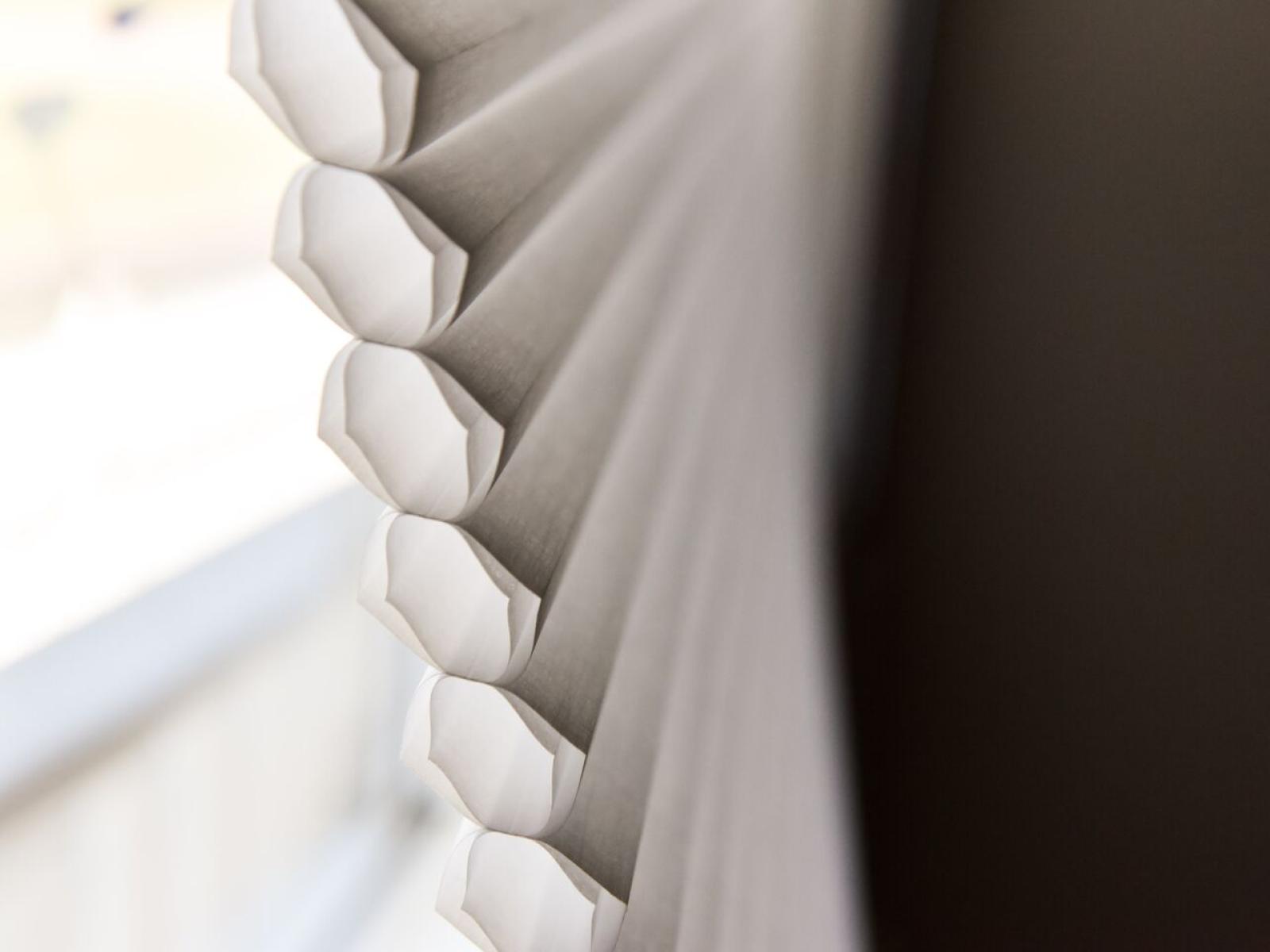Home Hacks Backed by Research
PNNL identifies residential solutions for dual challenges of energy efficiency and disaster resistance

PNNL researchers analyze the effectiveness of honeycomb blinds in reducing heating and cooling loads at PNNL’s Lab Homes on the laboratory’s Richland, Washington, campus. The Lab Homes serve as test beds for various products with potential to improve residential energy efficiency.
(Photo by Andrea Starr | Pacific Northwest National Laboratory)
A “life hack” is difficult to define, but you know the feeling when you discover one. It often involves a new perspective on a product designed for a familiar purpose, recognizing its potential to solve other everyday challenges. (Who would have imagined all the clever uses for spare binder clips?)
The same principle often applies to solutions for energy efficiency—for example, a relatively simple retrofit project that simultaneously reduces a homeowner’s electricity bill, increases their comfort, and protects their home and health from natural disasters, such as heatwaves. Researchers at Pacific Northwest National Laboratory (PNNL) are curating these for homeowners, contractors, builders, architects, and other buildings-industry stakeholders.
Baby, it’s hot outside
Extreme heat was already the cause of more deaths than any other disaster type in the United States, and now that extreme temperatures are predicted to increase across the country, the risks are higher than ever. The country’s built environment plays a role in exacerbating extreme heat, as buildings, roads, and parking areas tend to measurably increase local temperatures.
PNNL researchers know, however, that buildings such as homes are also the most practical and effective refuge from extreme heat.
“At PNNL, we are synthesizing decades worth of research into feasible, actionable options that builders and homeowners can consider to make houses more resilient to extreme heat and other natural disasters,” said Building Research Engineer Christian Kaltreider, who recently presented on this topic at the annual National Home Performance Conference. “New homes can be designed for this purpose, and there are also many retrofit options that can make a big difference for existing homes.”
For example, any measures that can be implemented to minimize heat gain in the first place help maintain comfortable temperatures within the home while also reducing strain on air conditioning equipment—and the electric grid overall. Solar radiation is the largest source of heat gain in most houses, so any type of shade, such as vegetation and window coverings, can make a big impact. Even solar panels, which are typically installed for the sole purpose of generating renewable energy, can also reduce cooling demand by providing shade to the roof or windows.
From raw data to actionable guides
PNNL shares this guidance and more through the Building America Solution Center (BASC), a publicly available resource managed by PNNL and hosted by the U.S. Department of Energy (DOE) Building Technologies Office. Visitors to the BASC can find dozens of easy-to-follow guides for implementing extreme heat resilience solutions, along with similar resources related to a variety of disaster types, including hurricanes, floods, earthquakes, and wildfires.
The BASC also provides a wealth of expert information on hundreds of high-performance construction topics, such as air sealing, insulation, windows, and indoor air quality. PNNL continuously adds new resources as guidance becomes available.
“PNNL originally launched the BASC in 2013 to help builders meet criteria for federal energy efficiency programs—but when dozens of billion-dollar disasters hit the United States in 2020 alone, DOE saw an opportunity to address such risks from a buildings perspective,” said PNNL Building Research Scientist Terri Gilbride, who serves as content manager for the BASC. She explained that, for every dollar a homeowner invests in preemptive disaster resistance, they can save up to around $13 in post-disaster recovery costs.
“For example, the data reveals that the simple additional step of taping the seams in the plywood when installing a new roof can save a homeowner up to $100,000 in water-damage repair costs resulting from hurricanes and other severe storms,” Gilbride said. “Spending an extra $150 upfront for additional caulk to seal around windows and doors, as well as at wall-to-floor seams, avoids multiple, potentially expensive problems by keeping out pests, pollen, moisture, and extremely cold or hot air.”
Visit the BASC to learn more about hacking your home for both energy efficiency and disaster resilience—and much more.
Published: August 4, 2023